Two weeks ago, I was invited to test drive the all-new 2013 Lexus GS in Dana Point, California. This is the first part of my review.
In a presentation I attended just prior to getting behind the wheel of the new Lexus GS, Chief Engineer Yoshihiko Kanamori, outlined the four key objectives for the car’s development team:
- Create an emotional driving experience.
- Move Lexus design in a new direction.
- Advance Lexus leadership in hybrid technology.
- Provide the best packaging in the mid-size luxury class.
It turns out that these four goals make up the essential story of the new GS, with each deserving special attention. Today, let’s start with the technical component of Kanamori-san’s primary target — making the fourth-generation GS more fun to drive.
“To provide an emotional driving experience, I believe a car must provide agility, acceleration and the braking a driver expects,” Kanamori-san told us, “For some, it may mean driving quickly over a challenging road, and for others it may be cruising down the highway, but for many drivers, it means both.”
The very first step taken by GS engineers was stiffening the body structure to to improve overall stability and control.
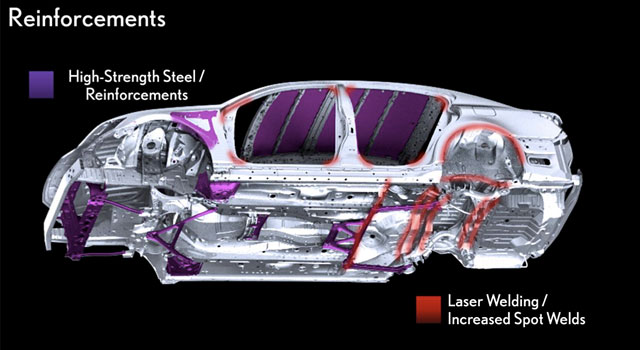
“Chassis tuning starts with a stout frame, which benefits extensively these days from computer-aided analysis and engineering,” Paul Williamsen, National Manager of Lexus College, explained. “As a result of that, the engineers made some decisions to dramatically increase the use of high-strength steel, and using much more laser welding are certain key high stress body areas.”
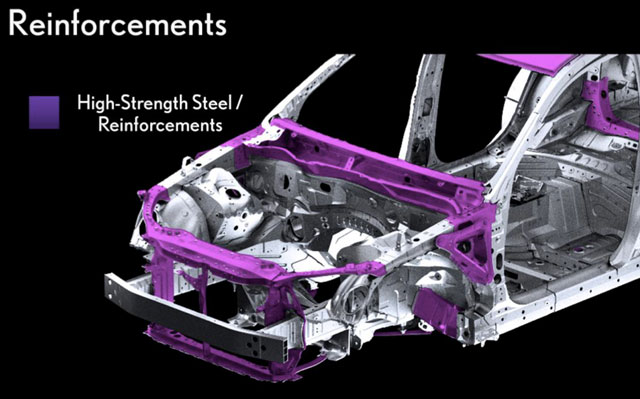
All this work at stiffening the chassis lead to some serious improvements, with rigidity up 14% over the previous generation GS — and most importantly, almost no increase in overall weight.
In order to balance the extra mass, Lexus engineers turned to reducing weight in other ways, including the use of hot-pressed steel, a metal so strong that it must be heated to high temperatures with an electric current before it can be stamped. This was used for the B-pillar and the roof side-rails, and helped to achieve extreme high strength with low weight — here’s a breakdown of the metals used:
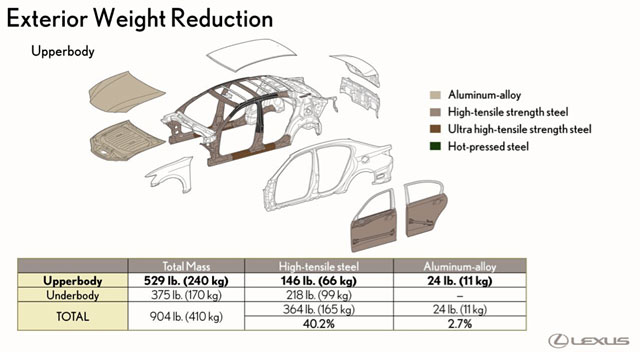
This weight reduction extended into the cabin and the interior materials as well:
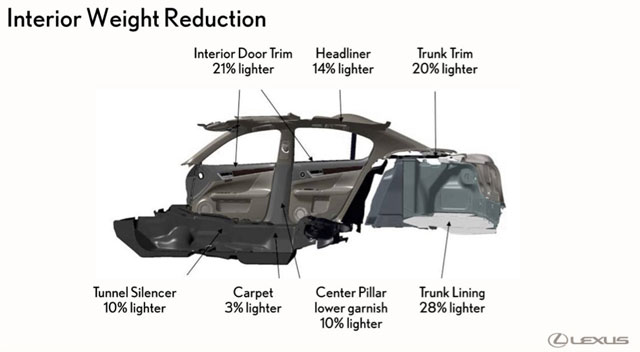
The next area GS engineers focused on was the suspension, which remains a double-wishbone setup in the front and a multi-link setup in the rear, but with several key improvements — most notably in the use of aluminum to reduce weight. The rear springs were also moved to allow for more trunk space, with the actual links reconfigured to make room for the F Sport package’s rear-wheel steering.
The GS Adaptive Variable Suspension (AVS) was also redesigned, moving from the conventional setup that has sensors in each corner of the vehicle to an all-new system that calculates dampening based on overall movement:
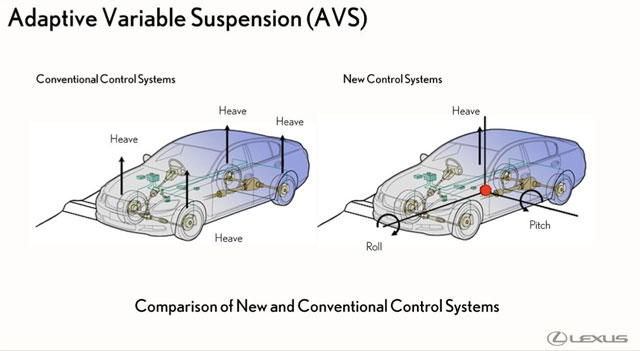
This new system allows the AVS to control all four wheels simultaneously, improving ride quality at low speeds and stability at high speed — very important when it comes to balancing performance and comfort.
Also new to the 2013 GS is Lexus Dynamic Handling (LDH), a GS F Sport option that combines two technologies — Variable Gear Ratio Steering, which adjusts the steering based on speed (more responsive at low speeds, less so when travelling at high speed), and Dynamic Rear Steering (DRS), which turns the rear wheels up to two degrees in both directions. The DRS system also adjusts itself based on the speed of the GS — at higher speeds, the rear wheels turn in the same direction as the front wheels for improved stability, but at lower speeds, the rear wheels turn in the opposite direction for better handling.
All of these systems can be controlled by the driver by using the Drive Mode Select dial located in the center console:
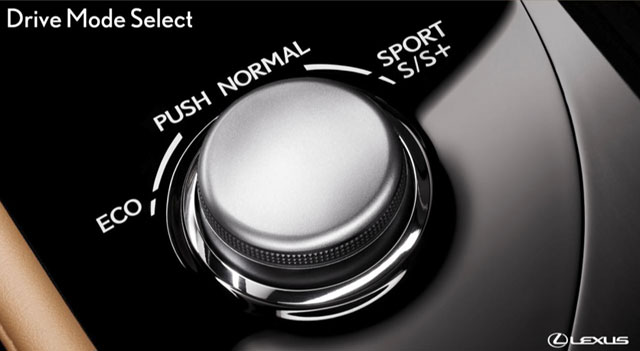
With Normal as the baseline, the remaining three modes affect the driving performance in different ways:
- ECO Mode is focused on fuel economy, smoothing out any abrupt variations in the throttle and placing tighter restrictions on the air conditioner.
- SPORT S Mode increases throttle response, quickens transmission shifts, and enables downshift throttle blips.
- SPORT S+ Mode, which is available to GS models equipped with AVS, adjusts the suspension, electric power steering, VGRS and the VDIM settings.
Not all the improvements were highly technical in nature — simple sound also played a key role, with GS engineers employing a Intake Sound Creator to pipe engine “noise” into the cabin, similar to the technique used in the LFA:
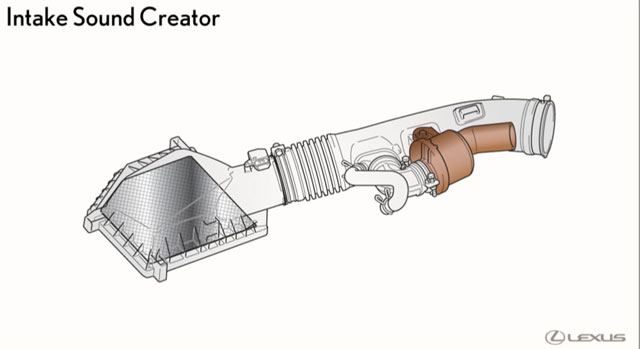
Lastly, adjustments were also made to the muffler, simplifying the flow to create a sportier exhaust note:
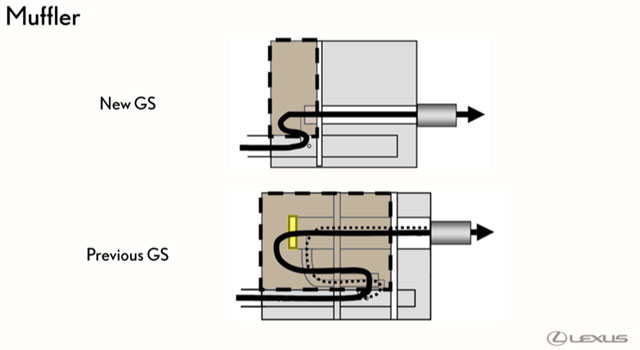
In a way, it’s ironic that so much technical work goes into creating a more “emotional driving experience”, but it also reflects a certain pattern I see developing around the new GS. There’s this sense of balance — excitement and comfort, technology and passion, performance and luxury, form and function — and it’s a feeling that only grows throughout the day of driving.
Tomorrow: Moving the Lexus design forward.

Comments